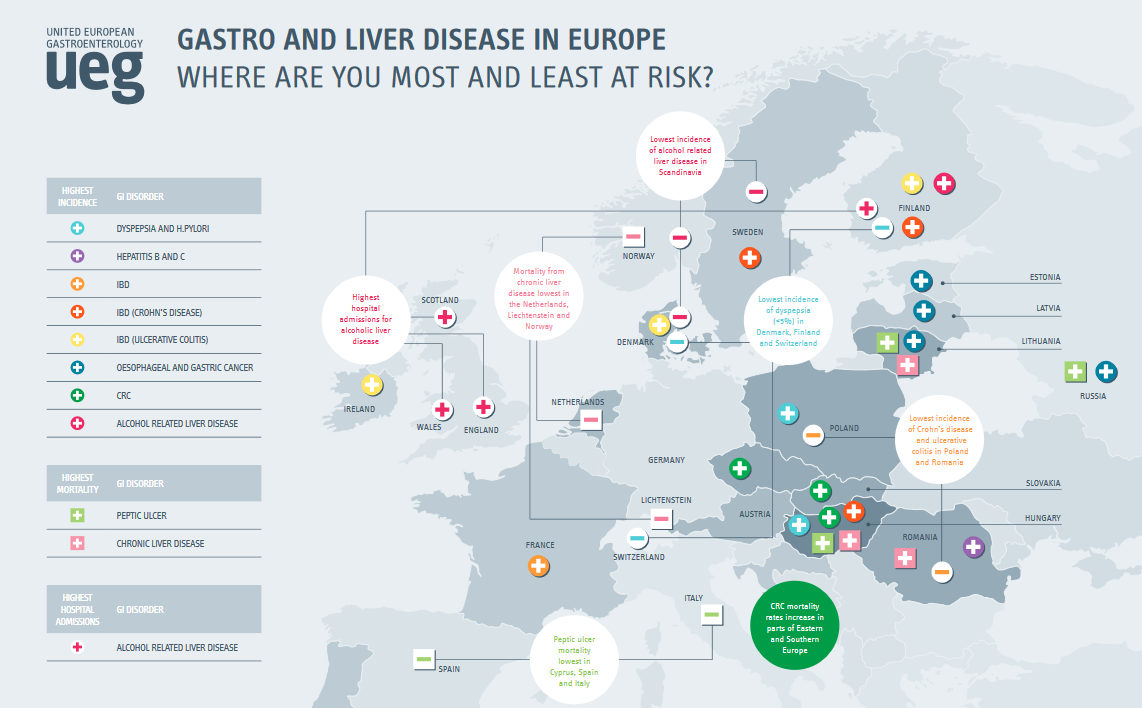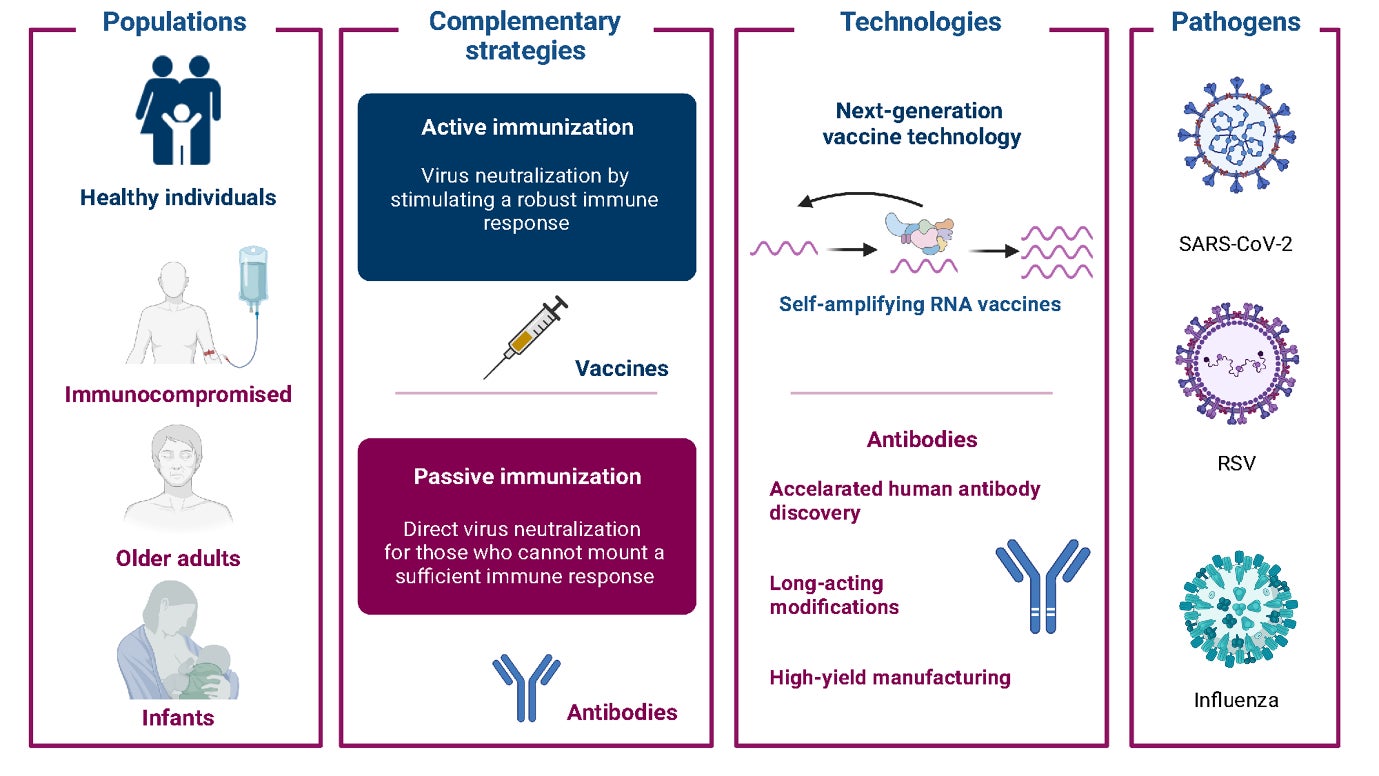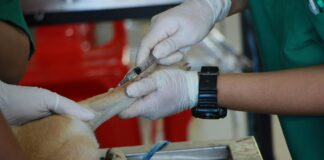Are you curious about what makes a clinical medical assistant an indispensable part of healthcare today? This exciting career path is rapidly growing, offering numerous opportunities for those passionate about patient care and medical administration. But what exactly does a clinical medical assistant job description include, and why are employers constantly seeking these skilled professionals? From scheduling appointments to assisting with medical procedures, the role blends both clinical and administrative duties, making it a dynamic and rewarding profession. Many wonder, how can one become a certified clinical medical assistant and what are the best clinical medical assistant certification programs available? In an era where healthcare is evolving faster than ever, staying updated with the latest clinical medical assistant training and medical assistant certification online options can give you a competitive edge. Have you ever thought about the salary potential and job outlook for clinical medical assistants in 2024? With the healthcare industry booming, this career offers not just stability but also the chance to make a real difference in patients’ lives. Whether you’re exploring entry-level medical assistant jobs or aiming for advanced roles, understanding the ins and outs of this profession is the first step toward an exciting and fulfilling healthcare career. Ready to dive deeper into the world of clinical medical assistants? Let’s explore what makes this role so vital and sought-after today!
Top 10 Proven Tips for Clinical Medical Assistants to Excel in 2024
So, you wanna know about clinical medical assistant jobs, huh? Well, buckle up, because this might not be your usual boring read. Clinical medical assistants are those folks who kinda do a lot of the behind-the-scenes stuff in doctor’s offices or hospitals, but not really doctors or nurses. They help with patient care, but also juggle a bunch of admin work. Sounds like a lot, right? Yeah, it is.
First off, what exactly does a clinical medical assistant do? I mean, it’s not just taking your blood pressure and saying “Hi, how ya doin’?” They do assist doctors during exams, take vital signs, collect samples (like blood or urine), and sometimes even give injections. But wait, there’s more! They also handle scheduling, update patient records, and deal with insurance paperwork. Honestly, it’s like being a ninja who switches between medical and clerical roles without breaking a sweat.
Here’s a quick table to break down some of the typical duties:
| Task | Description | Frequency |
|---|---|---|
| Taking vital signs | Measure blood pressure, pulse, temperature | Every patient visit |
| Preparing patients | Getting patients ready for exam or procedures | Every patient visit |
| Collecting specimens | Blood, urine, or other samples | As needed |
| Assisting with procedures | Help doctor during minor surgical procedures | Occasionally |
| Administrative tasks | Scheduling, billing, EMR data entry | Daily |
Not really sure why this matters, but apparently knowing these duties can help you decide if you wanna be one or not. Some people think it’s a stepping stone to becoming a nurse or a doctor, others just like the job itself.
Now, about the training. You don’t have to be a rocket scientist to become a clinical medical assistant, but you do need some specialized education. Usually, a certificate or diploma program that lasts anywhere from 6 months to a year is enough. Some colleges even offer associate degrees. The programs teach you anatomy, medical terminology, and clinical skills. Plus, there’s hands-on training where you get to poke around real patients – don’t worry, it’s supervised.
Here’s a simple checklist of what you’ll learn in most programs:
- Basic anatomy and physiology
- Medical terminology (this one’s a doozy)
- Clinical procedures (like injections, EKGs)
- Patient care fundamentals
- Administrative skills (scheduling, billing)
- Infection control and safety procedures
Maybe it’s just me, but I feel like the medical terminology part could make anyone’s head spin. I mean, how many ways can you say “heart” anyway?
Salary-wise, being a clinical medical assistant isn’t gonna make you rich overnight, but it’s decent for the level of training required. According to some sources (not gonna name names), median annual wages hover around $35,000 to $40,000, but this varies a lot by location and experience. Urban areas pay more, naturally, but then the cost of living is higher too. So, balance that out.
Let’s put it in a quick comparison chart:
| Location Type | Average Salary | Cost of Living Factor | Adjusted Pay Estimate |
|---|---|---|---|
| Urban (e.g. NYC) | $42,000 | High | $35,000 |
| Suburban | $37,000 | Medium | $38,000 |
| Rural | $33,000 | Low | $36,000 |
See? Sometimes, those city lights don’t pay off as much as you think.
One thing that’s often overlooked is the stress factor. Clinical medical assistants often have to deal with cranky patients, tight schedules, and doctors who expect miracles. It’s not for the faint of heart. Also, the job requires standing for long hours, multitasking like crazy, and sometimes dealing with bodily fluids (not exactly glamorous). But hey, if you like helping people and don’t mind a bit of chaos, it might be your calling.
Quick pro tip: If you’re considering certification, look into the CMA (Certified Medical Assistant) exam from the AAMA (American Association of Medical Assistants). Passing that can bump up your job prospects and pay. But don’t sweat it if you don’t pass on the first try – lots of folks have been there.
Now, a little funny thing: sometimes people confuse clinical medical assistant with “medical assistant” in general. The difference is real, though subtle. Clinical medical assistants focus more on the patient care (clinical) side, while administrative medical assistants might be more desk-bound. It’s like the difference between being a chef and a restaurant manager – both important, but different vibes.
Before
How to Become a Successful Clinical Medical Assistant: Step-by-Step Guide
So, you wanna know about clinical medical assistant job description and duties, huh? Well, buckle up because this is gonna be a bit all over the place, just like my morning coffee routine — a mess but somehow it works. Clinical medical assistants are like the Swiss army knives of the medical world, doing a lil’ bit of everything, from patient care to clerical work. They’re the behind-the-scenes heroes, or sometimes the front desk warriors, depending on the day and the clinic.
What is a Clinical Medical Assistant, Anyway?
Not really sure why this matters, but a clinical medical assistant certification programs usually train folks to handle both clinical and administrative tasks in healthcare settings. They’re kind of like the glue that hold the doctor’s office or clinic together, without them, everything would probably fall apart. Seriously, try imagining a clinic with no one to take vitals or schedule appointments — chaos!
Here’s a quick look at what their daily duties might look like (and yes, I’m throwing in a bullet list, because who doesn’t love a good list?):
- Taking patient histories (no, they don’t just ask “how you doin’?”)
- Measuring vital signs like blood pressure and temperature
- Assisting with minor surgeries or procedures (gloves on, people)
- Administering injections or medications as permitted (don’t try this at home)
- Scheduling and confirming patient appointments
- Handling insurance forms and billing stuff (yawn, but important)
- Preparing exam rooms and sterilize equipment
Why Become a Clinical Medical Assistant?
Maybe it’s just me, but I feel like this is one of those jobs where you actually get to feel useful every day. You get to interact with people, learn a ton about medicine, and not be stuck behind a desk all day (unless you’re doing the billing part, then yeah, desk life).
| Pros | Cons |
|---|---|
| Relatively short training period | Sometimes stressful, lots of multitasking |
| Good job outlook and demand | Salary not super high at entry level |
| Variety of tasks | Physical job – standing a lot |
| Opportunity to move up in healthcare | Emotional toll dealing with sick patients |
Training and Certification: What You Gotta Know
If you’re curious about how to become a clinical medical assistant, you’ll probably want to look into clinical medical assistant training programs near me or online options. The programs usually last from a few months up to a year, depending on if you’re going full-time or part-time. Most courses cover anatomy, medical terminology, clinical procedures, and even some basic pharmacology.
Oh, and here’s a little table I whipped up to compare popular certifications:
| Certification | Duration | Cost Approx. | Recognized By |
|---|---|---|---|
| Certified Clinical Medical Assistant (CCMA) | 6 months | $1,000-$1,500 | National Healthcareer Association |
| Certified Medical Assistant (CMA) | 9-12 months | $2,000-$5,000 | American Association of Medical Assistants |
| Registered Medical Assistant (RMA) | 9-12 months | Varies | American Medical Technologists |
What’s It Really Like on The Job?
Here’s where things get interesting — because the job isn’t all sunshine and rainbows. Clinical medical assistants often juggle a ton of tasks at once. One minute you’re doing a finger prick for blood glucose, next you’re dealing with a crying kid or an annoyed patient who’s been waiting for 20 minutes. If multitasking was an Olympic sport, they’d probably win gold medals.
Sometimes, you gotta deal with doctors who speak in medical jargon that might as well be a foreign language to a regular person. And the paperwork? Don’t get me started. It feels like you’re swimming in a sea of insurance claims and HIPAA compliance forms. But hey, if you like a job that keeps you on your toes, this is the gig.
Skills You’ll Want to Have Before Jumping In
Not everyone is cut out for this, so here’s a quick checklist of what might help:
- Good communication skills (because you’ll talk to patients, doctors, nurses, and billing staff)
- Attention to detail (those meds better be right)
- Ability to stay calm under pressure (patients get cranky, it happens)
- Basic computer skills (EMR systems aren’t going away)
- Empathy (sometimes patients just need someone to listen)
Quick Tips for Success as a Clinical Medical Assistant
- Always double-check patient info – mix-ups can cause major headaches.
- Keep your certifications up to date, don’t slack off!
- Learn some basic medical terminology before your first day, trust me on this.
Essential Skills Every Clinical Medical Assistant Must Master for Career Growth
So, you wanna know about clinical medical assistant jobs near me or maybe just what a clinical medical assistant actually do? Well, buckle up, because this isn’t going to be your typical “perfect” article. Honestly, clinical medical assistants plays a huge role in healthcare settings, but people don’t really talk about it much. Maybe it’s just me, but I feel like they are the unsung heroes of the doctor’s office.
First of all, what exactly a clinical medical assistant is? They are the folks who help doctors and nurses by doing clinical tasks like taking vitals, preparing patients for exams, and sometimes even giving injections. Not really sure why this matters, but they often also handle administrative duties — like scheduling appointments or managing patient records. It’s kind of a mixed bag, you know?
Day-to-Day Responsibilities of a Clinical Medical Assistant
Here’s small table to give you an idea what a typical day might look like:
| Task | Description | Time Spent (approx) |
|---|---|---|
| Taking vital signs | Measure blood pressure, pulse, etc | 20% |
| Patient preparation | Help patients get ready for exams | 15% |
| Admin duties | Scheduling, filing, updating records | 25% |
| Assisting procedures | Helping during minor medical procedures | 30% |
| Cleaning and stocking | Make sure exam rooms are ready | 10% |
So yeah, as you can see, it’s not just sitting around and making coffee like some people might think. And don’t get me started on the multitasking required. One minute you’re dealing with a cranky patient, next you’re trying to find a missing file that’s “definitely here somewhere.”
How to Become a Clinical Medical Assistant
If you thinking about entering this field, here’s a basic checklist what you might need:
- High school diploma or GED (obviously)
- Completion of a clinical medical assistant training program (usually 6 months to 1 year)
- Certification (like CMA or RMA) — not always required, but highly recommended
- CPR and First Aid certification
- On-the-job training
Now, I gotta say, these programs can be pretty intense. Like, you’re learning phlebotomy, EKGs, medical terminology, and sometimes even pharmacology. For some people, it’s a lot to swallow, but it’s also kind of cool to get hands-on experience so fast.
Why The Role is Important (Even If Nobody Tells You)
You see, clinical medical assistants bridge the gap between patients and physicians. Without them, doctors would probably spend 90% of their time doing paperwork or chasing down patients, and that would be a nightmare for everyone. Plus, they help reduce errors by double-checking information and making sure that everything runs smoothly in a clinical setting.
Here’s a quick list of why clinical medical assistant career is worth considering:
- High demand in healthcare facilities
- Relatively short training period
- Variety of clinical and administrative tasks (never boring)
- Opportunity for advancement (some move into office management or nursing)
- Competitive pay for entry-level healthcare jobs
Common Misconceptions About Clinical Medical Assistants
People sometimes confuse clinical medical assistants with medical secretaries or nursing assistants. While there’s some overlap, clinical medical assistants usually have more hands-on patient care responsibilities. For example, medical secretaries mostly handle paperwork and communication, whereas clinical medical assistants might be drawing blood or taking EKGs.
Also, not all clinical medical assistants get to do the “fun” stuff like injections or lab work — it depends on the state laws and employer policies. So if you’re hoping to be poking people with needles all day, check your local regulations first.
Salary Expectations and Job Outlook
Okay, let’s talk money. According to recent data, the average salary for clinical medical assistants in the US is around $35,000 per year. But don’t get too excited, because that varies widely by location, experience, and certification.
Here’s a small chart to break it down:
| Experience Level | Average Salary (Annual) |
|---|---|
| Entry-level | $28,000 – $32,000 |
| 1-3 years experience | $33,000 – $38,000 |
| 3+ years experience | $40,000+ |
Also, demand for clinical medical assistants is expected to grow by 19% over the next decade, which is faster than average for all occupations. So, if job security is your jam, this might be a decent bet.
Final Thoughts (Because Everyone Loves Those)
In conclusion, being a certified clinical medical assistant training programs graduate or working as one is a mixed bag of challenges and rewards.
Secrets to Boosting Your Clinical Medical Assistant Salary and Job Opportunities
So, you wanna know about clinical medical assistant job description and duties? Well, buckle up, cause this ain’t your typical boring article. Clinical medical assistants are basically the unsung heroes in the healthcare world, but most people don’t even know what they really do. It’s like, you see them around, but ask them what they do and you get a million different answers. Not really sure why this matters, but I feel like they deserve a little spotlight.
First off, what exactly is a clinical medical assistant? In simple terms, they are the folks who help doctors and nurses with clinical tasks. But don’t think it’s just fetching coffee or filling out paperwork. Nah, they do a whole bunch of stuff that keeps the place running smooth. Here’s a quick list of their main responsibilities:
| Clinical Medical Assistant Duties | Explanation |
|---|---|
| Taking vital signs | Measuring blood pressure, pulse, temperature, etc. |
| Preparing patients for examination | Helping patients get ready for doctor visits |
| Assisting during medical procedures | Handing tools, managing equipment |
| Administering injections and medications | When trained and allowed to do so |
| Documenting patient information | Recording medical histories and updating files |
Maybe it’s just me, but I think this table makes it way easier to get what they do, instead of me rambling on forever.
Now, you might ask, “Okay, but what kind of training does one need to become a clinical medical assistant?” Good question. Usually, you gotta complete a certificate or diploma program that covers both administrative and clinical skills. Some programs last just a few months, while others can take up to a year or more. Oh, and not to forget, some states require certification or licensing – which adds another layer of complexity, because not everywhere is the same. Ugh, healthcare.
Here’s a rough overview of what a clinical medical assistant certification requirements might look like:
| Training Component | Typical Duration | Notes |
|---|---|---|
| Anatomy and Physiology | 4-6 weeks | Basics of human body |
| Medical Terminology | 2-4 weeks | Learning the lingo |
| Clinical Procedures | 6-8 weeks | Hands-on stuff like injections |
| Administrative Skills | 3-5 weeks | Scheduling, billing, and records |
| Externship/Practical Training | 4-12 weeks | Real-world experience |
This mix means you gets both the paperwork and the hands-on patient stuff, which might be why this job is so versatile.
Ok, now let’s talk salary. Everyone wants the money, right? According to some sources, the average clinical medical assistant salary in the US is around $34,000 per year. But don’t get too excited, cause it can be lower or higher depending on where you live, your experience, and the clinic or hospital you work at. Plus, some places might offer benefits, while others might not. So yeah, it’s a bit of a gamble sometimes.
Something that not many peoples talk about is the stress level that comes with being a clinical medical assistant. They’re often the first person patients see, and that means they get all kinds of emotions thrown at them – from nervousness, anger, to confusion. If you ain’t got the patience, this job might chew you up and spit you out. But on the flipside, it can be pretty rewarding too, especially when you help someone feel better.
Here’s a quick pros and cons list, cause who doesn’t love those?
Pros:
- Diverse daily tasks, no two days are the same
- Good stepping stone into healthcare careers
- Opportunities for growth and specialization
Cons:
- Stressful dealing with difficult patients
- Sometimes low pay for the amount of work
- Certification and training requirements vary a lot
Also, I heard somewhere that the demand for clinical medical assistants is expected to grow quite fast. Maybe it’s cause healthcare is always needed or people are just getting older, who knows? But in any case, it sounds like a decent job if you want to get into the medical field without becoming a full doctor or nurse.
For those curious about the work environment, clinical medical assistants usually work in doctors’ offices, hospitals, outpatient clinics, or even urgent care centers. They might work full-time or part-time, and sometimes have to deal with odd shifts. Not the most glamorous thing, but hey, someone’s gotta do it.
If you’re thinking about becoming a clinical medical assistant, here’s a little checklist to consider:
- Are you comfortable working with people all day?
- Can you handle some gross stuff (like blood, yuck)?
- Do you want a job that mixes clerical
Clinical Medical Assistant Career Path: What You Need to Know to Stand Out
So, you wanna know about the life of a clinical medical assistant job description? Well, buckle up, because it ain’t always rainbows and butterflies out there in the medical world. These folks are kinda like the Swiss Army knives of the healthcare world — doing a little bit of everything, but not always getting the applause they deserve. Honestly, I don’t really get why that matters, but hey, that’s the way the cookie crumbles.
What the Heck Does a Clinical Medical Assistant Do?
First off, a clinical medical assistant duties and responsibilities list is longer than your grocery receipt after a holiday feast. These people juggle patient care, office work, and sometimes even the occasional “please hold while I find your chart” saga. Here’s a quick breakdown:
| Task | Description | Importance Level (1-5) |
|---|---|---|
| Taking vital signs | Blood pressure, pulse, temperature etc | 5 |
| Assisting physicians | During examinations or procedures | 4 |
| Administering injections | Like vaccines or medications | 3 |
| Scheduling appointments | Yep, they do that too | 2 |
| Managing patient records | Paper or electronic | 4 |
Now, it’s funny because most people think a clinical medical assistant certification requirements is just a piece of paper you get after watching a couple videos. Nope, it’s a whole ordeal. You gotta study, take tests, and sometimes work your butt off in internships. But maybe it’s just me, I feel like some people don’t really appreciate how much work goes into it.
The Skills You Need (or Should Have, At Least)
Look, if you think being a clinical medical assistant salary and benefits is all about the money, well… you might be in for a surprise. Sure, it pays decent, but the real skill is juggling all sorts of tasks without losing your mind. Here’s a little list of what makes a good clinical medical assistant:
- Good communication skills (because yelling at patients is NOT an option)
- Attention to detail (or you might give someone the wrong meds — yikes!)
- Empathy (you gotta care, or it shows)
- Basic medical knowledge (you’re not a doctor, but close enough)
- Multitasking abilities (like a circus performer, but with less glitter)
Why You Should Care About Clinical Medical Assistant Training Programs
Honestly, the clinical medical assistant training programs near me are lifesavers for many who want to jump into healthcare without years of med school. It’s like a shortcut, but a legit one. These programs teach you the ropes, from phlebotomy to EKGs, and yeah, sometimes it’s overwhelming.
Here’s a quick glance of what a typical training curriculum might looks like:
| Module | Topics Covered | Duration (weeks) |
|---|---|---|
| Medical Terminology | Words that make doctors sound smart | 4 |
| Anatomy and Physiology | Learning what’s inside the body | 6 |
| Clinical Procedures | Blood draws, injections, EKGs, etc | 8 |
| Administrative Skills | Scheduling, billing, records | 4 |
Not really sure why this matters, but some programs even throw in a little bit of psychology. Maybe because dealing with people who are sick ain’t always sunshine and daisies.
The Ups and Downs of Being a Clinical Medical Assistant
Look, every job has it’s good and bad sides, and this one is no exception. On one hand, you get to help people directly, which is super rewarding. On the other hand, you might have to deal with some seriously cranky patients or paperwork that makes you wanna pull your hair out.
Here’s a quick pro and con list because who doesn’t loves lists?
| Pros | Cons |
|---|---|
| Helping patients feel better | Sometimes dealing with rude patients |
| Decent starting salary | Long hours, sometimes unexpected shifts |
| Variety of tasks keeps things interesting | Paperwork overload |
| Entry point into healthcare careers | Physical demands (standing a lot) |
How to Nail Your Job as a Clinical Medical Assistant
If you’re thinking about jumping into this career, here’s some practical advice that might save your bacon:
- Stay organized. You will have a million things on your plate, and losing track is not an option.
- Keep learning. Medical field changes faster than fashion trends, so keep up.
- Practice empathy. People come to clinics because they’re not feeling great — a little kindness goes a long way.
- Ask questions. Don’t pretend to know everything, because you
How Clinical Medical Assistants Can Improve Patient Care and Win Employer Praise
So, you wanna know about being a clinical medical assistant huh? Well, buckle up, because this job ain’t as simple as it sounds, but also it’s not rocket science either. Clinical medical assistants are like the Swiss army knife of the medical world—they do a little bit of everything, and sometimes it feels like they are doing everything but the doctor’s job. Not really sure why this matters, but you’ll find these folks making sure the clinic runs smooth, patients get seen, and that the paperwork doesn’t pile up to the ceiling.
What is a Clinical Medical Assistant?
Basically, a clinical medical assistant work in healthcare settings, like hospitals, doctor’s offices, clinics, and sometimes even in nursing homes. They assist physicians, nurses, and other healthcare professionals with clinical tasks. This means they might taking vital signs, prepare patients for exams, collect specimens, and sometimes even give injections. If you think that sounds stressful, well, sometimes it is. But hey, someone’s gotta do it.
| Task | Description | Frequency |
|---|---|---|
| Taking vital signs | Checking blood pressure, temperature | Daily |
| Preparing exam rooms | Cleaning and restocking supplies | Before each patient |
| Collecting specimens | Blood, urine samples | As needed |
| Assisting with procedures | Helping during minor surgeries | Sometimes |
The Skills You Probably Need
Honestly, being a clinical medical assistant requires a bunch of skills that you might not expect. For example, you have to be organized, but not just a little bit; super organized. Because if you miss a test or forget to sterilize something, well, that’s not great. You also need to be able to communicate with patients who might be freaking out about their health. And oh, multitasking! If you can’t juggle like a circus performer, then this might not be the gig for you.
Here’s a quick list of skills, but don’t take it as gospel, because every place is different:
- Taking patient histories (sounds easy, but sometimes people say weird stuff)
- Phlebotomy (that’s blood drawing, in case you didn’t know)
- EKG administration
- Basic lab tests
- Familiarity with electronic health records (ugh computers, right?)
- CPR and first aid certified (because emergencies happen)
Education and Certification – Do You Really Need It?
Maybe it’s just me, but I feel like everyone nowadays wants some fancy certificate to do anything. For clinical medical assistant jobs, usually you need a postsecondary certificate or diploma. Some places want you to be certified, like a CMA (Certified Medical Assistant) or RMA (Registered Medical Assistant). Others might just want you to have a GED and some experience. It depends on where you live and who you work for.
| Certification | Typical Duration | Why It Matters? |
|---|---|---|
| CMA | 9 to 12 months | Shows you know your stuff, boosts job chances |
| RMA | Similar to CMA | Another recognized credential |
| On-the-job training | Varies | Real world experience, but less formal |
Day in the Life of a Clinical Medical Assistant
You might wonder, what does a day looks like for these folks? Well, it’s a mix of chaos and routine. Most days, you’ll start by prepping exam rooms, checking schedules, and making sure everything is ready for patients. Then, you get to see a parade of people—some polite, some grumpy, some downright weird.
Here’s a sample schedule (note: it changes all the time, so don’t hold me to this):
| Time | Activity |
|---|---|
| 8:00 AM | Open clinic, prepare rooms |
| 9:00 AM | Take vitals on first patients |
| 10:30 AM | Assist doctor with minor procedures |
| 12:00 PM | Lunch (finally!) |
| 1:00 PM | Update patient records |
| 2:30 PM | Collect lab specimens |
| 4:00 PM | Clean and restock supplies |
| 5:00 PM | Close clinic |
Why You Should (or Shouldn’t) Become a Clinical Medical Assistant
Look, it ain’t for everybody. If you don’t like people, or blood, or sometimes dealing with cranky patients, then maybe look elsewhere. But if you want a job that’s steady, sometimes rewarding, and gives you a front-row seat to the medical world, this could be it.
Pros:
- Good entry point into healthcare
- Variety of tasks keeps it interesting
- Can lead to further medical careers
Cons:
- Can get
The Ultimate Checklist for Clinical Medical Assistants: Tools and Techniques for Success
So, you wanna know about clinical medical assistant job description and duties, huh? Well, pull up a chair, because this thing is more complicated than it sound. Clinical medical assistants (CMAs) are those folks you see in doctor’s offices, clinics, and hospitals, basically running around making sure everything run smooth—but not always. They do a lot of the behind-the-scenes work, which might not seem glamorous, but trust me, without them, the place would fall apart.
First thing’s first, what is a clinical medical assistant certification requirements anyway? To become a CMA, you usually gotta go through some formal training program. Its not just about knowing how to take blood pressure or give shots. There’s anatomy, medical terminology, phlebotomy, EKGs, and a bunch of other stuff that sounds like a foreign language if you don’t work in healthcare. Most places want you certified—like through the AAMA (American Association of Medical Assistants)—but not all. Weird, right? Some clinics just wing it with on-the-job training, which might explains some of the odd experiences you had at the doctor’s office.
Now, let me break down what a clinical medical assistant duties and responsibilities look like, and boy, it’s a mixed bag. You could be:
- Taking patient vitals (blood pressure, pulse, temperature, you name it)
- Preparing patients for examinations (which involves asking a bazillion questions)
- Collecting specimens (blood, urine, whatever the lab needs)
- Administering injections (yep, sometimes they give shots)
- Assisting the physician during exams (handing tools, making notes)
- Managing patient records and scheduling appointments (because paperwork never ends)
- Cleaning and sterilizing instruments (gross but necessary)
Honestly, it sounds simple, but juggling all these task is like spinning plates on a unicycle. Not really sure why this matters, but multitasking skills are a must unless you want everything to turn into a disaster zone.
Here’s a quick cheat sheet I made for you about clinical medical assistant salary and job outlook:
| Aspect | Details |
|---|---|
| Average Salary (US) | Around $35,000 to $45,000 |
| Job Growth (10 years) | Expected 19% increase (yay!) |
| Work Environment | Clinics, hospitals, private practices |
| Common Shifts | Mostly day shifts, some nights |
| Stress Level | Medium to high (depends on clinic) |
So, the money is alright, but not gonna buy you a yacht, if you know what I mean. Still, the job outlook is quite good, which means you are not stuck forever. Maybe it’s just me, but I feel like this job is kinda underrated considering how much they do.
One thing that often gets overlooked is the emotional toll. Dealing with sick people all day, sometimes cranky or scared patients, and the constant pressure to not mess up can be exhausting. Plus, the pay isn’t always matching the stress, which makes you wonder why anyone signs up for this gig.
Here’s a little pro tip for those interested in clinical medical assistant training programs online: make sure the program is accredited. Otherwise, you might end up with a piece of paper that no one really cares about. Also, hands-on experience is crucial, so programs that offer externships or clinical rotations are the way to go. Trust me, you want to get your hands dirty (literally) before walking into a real clinic.
Let’s talk tools and tech—yeah, CMAs gotta be tech-savvy, whether they likes it or not. Electronic Health Records (EHR) systems are everywhere now, and if you can’t figure out how to navigate them, you’ll be stuck in paperwork hell. Here’s a quick list of tech skills that are handy:
- Using EHR software like Epic, Cerner, or Meditech
- Scheduling and billing software basics
- Basic troubleshooting on medical equipment
- Data entry accuracy (because one typo can cause chaos)
If you think this sounds like a lot, you’re not wrong. But hey, if you’re organized and don’t mind a little chaos, it can be rewarding. Oh, and don’t forget, being a good listener and communicator helps a ton, since you’re often the bridge between patient and doctor.
Before I forget, here’s a quick pros and cons table about being a clinical medical assistant:
| Pros | Cons |
|---|---|
| Job availability is pretty good | Pay isn’t always great |
| Variety of duties keep it interesting | Emotional stress can be high |
| Opportunity for advancement | Sometimes long hours or weekends |
| Helps people directly | Physical demands (standing all day) |
In conclusion, being a clinical
Why Certification Matters: Best Clinical Medical Assistant Certifications to Advance Your Career
So, you wanna know about being a clinical medical assistant, huh? Well, buckle up because this job isn’t just about taking blood pressure and handing out band-aids. It’s way more than that, trust me. A clinical medical assistant do a lot of stuff behind the scenes that most peoples don’t even realize. And, honestly, some days it can feel like you’re juggling flaming swords while riding a unicycle. Not really sure why this matters, but the role is kinda crucial in healthcare settings.
What Does a Clinical Medical Assistant Actually Do?
Okay, picture this: you’re a clinical medical assistant, and you’ve got a checklist that looks like it was written by a caffeine-fueled octopus. Here’s some of the main things you’re responsible for:
| Task | Description | Frequency |
|---|---|---|
| Taking Vital Signs | Measure blood pressure, pulse, temperature, etc. | Every patient visit |
| Assisting with Exams | Help doctors during physical exams | Daily |
| Administering Injections | Give vaccines or medications | As needed |
| Preparing Patient Rooms | Clean and set up exam rooms | Between patients |
| Patient Documentation | Record medical histories and update charts | Constantly |
Sounds easy? Nah, it’s more like a whirlwind of poking, prodding, and paperwork. Maybe it’s just me, but I feel like no one told me about the mountain of paperwork that comes with it. Seriously, the documentation part is like a never-ending saga.
Skills You Kinda Need to Survive
Alright, so being a clinical medical assistant isn’t just about knowing where the thermometer is. You gotta have some serious skills. Here’s a quick rundown:
- Communication skills: You’ll talk to patients, doctors, nurses, and sometimes the office cat (okay, maybe not the cat).
- Technical skills: Using medical instruments, EHR systems, and sometimes ancient fax machines.
- Multitasking: Because you’ll be doing 10 things at once, and none of them can wait.
- Empathy: Patients can be scared or grumpy, and you gotta handle that with a smile (or at least a fake one).
- Time management: Ever seen someone run late and still have to see 20 patients? Yeah, that’s you.
If you’re thinking, “Geez, I didn’t sign up to be a superhero,” you’re not alone. But hey, the paycheck and job stability are not too shabby.
Educational Pathways and Certifications
Here’s where it gets a bit confusing. To become a clinical medical assistant, you usually need a post-secondary certificate or diploma. Some folks jump straight into training programs that last about 9 months to a year. Others might do an associate degree, but that’s less common for this role.
| Program Type | Duration | Certification | Cost Range |
|---|---|---|---|
| Certificate Program | 9-12 months | CMA (Certified Medical Assistant) | $3,000 – $10,000 |
| Associate Degree | 2 years | Possible CMA, other certifications | $10,000 – $30,000 |
| On-the-job Training | Varies | None or employer-specific | Usually free |
Not really sure why this matters, but some employers prefer you have the Certified Medical Assistant (CMA) credential from the AAMA (American Association of Medical Assistants). It’s like the gold star that tells everyone you know your stuff.
Day in the Life (Spoiler: It’s Busy)
Imagine you’re clocking in at 8 a.m. Your first task might be taking vitals from a grumpy old man who doesn’t like needles. Then, you gotta prep the room for a pediatric patient who probably just smeared glue on the walls last time. Between all that, you’re answering phones, scheduling appointments, and maybe even calming down a worried mom who googled every possible disease.
Here’s a rough schedule:
| Time | Activity | Notes |
|---|---|---|
| 8:00 – 9:00 | Patient intake & vitals | Be ready for cranky patients |
| 9:00 – 11:00 | Assisting doctor during exams | Pro tip: don’t lose the paperwork |
| 11:00 – 12:00 | Room prep & sterilization | Cleanliness is next to godliness |
| 12:00 – 1:00 | Lunch (if you get a break) | Eat fast, emails won’t wait |
| 1:00 – 3: |
Time Management Hacks for Busy Clinical Medical Assistants: Work Smarter, Not Harder
So, you wanna know about being a clinical medical assistant, huh? Well, buckle up, because this job is like a mixed bag of stuff — some days you feel like a superhero, other days, you’re just trying to remember if you gave the patient the right injection or not. And trust me, it ain’t always as glamorous as those TV shows makes it look.
First things first, a clinical medical assistant is basically the right hand of doctors and nurses in a clinic or hospital setting. They handle everything from taking vital signs, drawing blood, to prepping the patient for exams. You would think it’s easy, but nah, it’s a lot of multitasking and sometimes, you need to keep your cool when the patient is freaking out about a needle. Not really sure why this matters, but did you know some clinics still use paper charts? Yeah, it’s 2024 and some places be stuck in the past.
Let’s break down what a typical day might looks like for a clinical medical assistant:
| Task | Frequency | Notes |
|---|---|---|
| Taking vital signs | Every patient | Blood pressure, temperature, pulse |
| Preparing exam rooms | Before each patient | Clean and sterilize equipment |
| Assisting with minor procedures | As needed | Such as wound dressing or injections |
| Updating patient records | After each visit | Sometimes electronic, sometimes paper |
| Scheduling appointments | Throughout day | Juggling phone calls and walk-ins |
I know, it looks straightforward, but the reality is you’ll be juggling like 10 things at once. Maybe it’s just me, but I feel like employers expect you to be a mind reader sometimes — “Oh, you should know what the doctor wants without them saying it.” Spoiler alert: no, we don’t. Communication skills are key, but sometimes the doctor be mumbling like they’re ordering coffee not giving orders.
Now, let’s talk about the qualifications you need. Most places want you to have completed a clinical medical assistant training program, which usually takes a few months to a year. You get hands-on training in phlebotomy, EKGs, and basic lab procedures. But be warned, not all programs teaches you the same stuff. Some focus more on administrative skills, like billing and coding, while others are heavy on clinical skills.
Here’s a quick comparison table for two types of clinical medical assistant training programs:
| Program Type | Duration | Focus Areas | Certification Included? |
|---|---|---|---|
| Diploma/Certificate | 6-12 months | Clinical and administrative | Yes, usually Certified Medical Assistant (CMA) |
| Associate Degree | 2 years | More in-depth medical knowledge | Sometimes, plus more general education |
Oh, and don’t forget CPR certification. It’s like a must-have on your resume, even if you hope you never have to use it. But hey, better safe than sorry, right?
So what about salary? Well, the average pay for a clinical medical assistant in the US is around $16-$20 per hour, depending on your location and experience. Not exactly rolling in dough, but it’s a decent start if you’re looking to get your foot in the healthcare door. Plus, there’s always room to grow — some assistants eventually move into nursing or other healthcare roles.
If you’re thinking about the future, here’s a little list of pros and cons I cooked up:
Pros:
- You get to help people directly, which is kinda rewarding.
- Job outlook is good — healthcare ain’t going nowhere soon.
- Flexible schedules in some clinics.
- Varied tasks keep it from being boring.
Cons:
- Sometimes you deal with unpleasant stuff (bodily fluids, anyone?).
- Can be stressful when the clinic is packed.
- Pay isn’t amazing starting out.
- Documentation and paperwork can be a headache.
Now, here’s a quick checklist of skills that every clinical medical assistant should work on:
- Good communication skills (obviously)
- Attention to detail (no mix ups on meds, please)
- Basic clinical skills (phlebotomy, EKG, etc.)
- Time management and multitasking
- Empathy and patience (dealing with cranky patients ain’t fun)
Honestly, if you don’t have at least some patience, this job gonna chew you up and spit you out. And yeah, sometimes you gotta laugh at the chaos or you’ll go crazy.
Before I forget, here’s some practical tips for surviving your first month as a clinical medical assistant:
- Always double-check patient info before procedures.
- Keep a small notebook with important clinic protocols.
- Don’t be afraid to ask questions —
How to Navigate Challenging Situations as a Clinical Medical Assistant: Expert Advice
So, you wanna know about being a clinical medical assistant huh? Well, buckle up, because it’s not all sunshine and rainbows in this job, but it’s also not some soul-sucking nightmare everyone thinks it is. Maybe its just me, but I feel like people don’t really get what these folks do day-to-day. Spoiler alert: it’s a lot more than just taking blood pressure and handing out band-aids.
First off, what exactly is a clinical medical assistant? In simple words, they the folks that help doctors and nurses with clinical tasks in a healthcare setting. Not just the “clinical medical assistant duties” like scheduling appointments or answering phones (that’s more administrative stuff), but the real hands-on medical tasks. You know, things like drawing blood, taking vitals, prepping patients for exams, and sometimes even assisting with minor procedures. It’s like being the doctor’s right hand, if the doctor was too busy or lazy to do some of the less glamorous stuff.
What Skills You Need to Be a Clinical Medical Assistant
| Skill | Why It’s Important | Example of Use |
|---|---|---|
| Phlebotomy | Drawing blood safely and correctly | Taking blood samples for labs |
| Patient Care | Making patients comfortable and calm | Explaining procedures to patients |
| Medical Terminology | Understanding doctor’s orders and reports | Reading lab results or charts |
| Time Management | Balancing many tasks at once | Handling multiple patients |
| Communication | Talking clearly with patients and staff | Coordinating with nurses |
Now, don’t get me started on the whole “you need a certification” thing, because it’s kinda a mess. Some places don’t even require you to be certified, but if you want to stand out, then yeah — get certified as a clinical medical assistant certification programs. It’s not just a piece of paper, it actually teaches you the right way to do things, and trust me, winging it is a bad idea when you’re sticking needles in people.
A Day in The Life of a Clinical Medical Assistant
Honestly, no two days are the same. You might start your morning taking patient’s vital signs, then suddenly you’re running around fetching supplies because the nurse decided to “just wing it” and forgot to order more gloves. Oh, and you will get asked a million questions by patients who think you are a doctor (spoiler: you’re not).
Here’s a quick list of typical tasks:
- Taking patient histories (and trying to keep the patient from rambling)
- Preparing exam rooms (making sure everything is sterile-ish)
- Assisting with minor surgeries or procedures (gloves on, game face ready)
- Filing and updating patient records (because paper work never ends)
- Educating patients on medication or post-care instructions (try not to sound like a robot)
Why Being a Clinical Medical Assistant is Actually Pretty Cool
Look, I’m not saying it’s the easiest job on the planet. You’ll see some weird stuff, sometimes smell things that makes you question your life choices, and deal with stressed out patients who think you can magically fix their problems. But here’s the kicker: you’re part of a team that literally saves lives every day. Not really sure why this matters, but being a clinical medical assistant job description sometimes feels like being a superhero in scrubs.
Practical Tips for Aspiring Clinical Medical Assistants
- Get comfortable with multitasking. Seriously, you’ll be juggling more things than a circus performer.
- Learn to communicate well, not just with doctors but with patients who might be scared out of their wits.
- Stay organized. A cluttered workspace equals a cluttered mind, and that’s no good when you’re handling medical stuff.
- Don’t be afraid to ask questions. If you don’t know something, better ask than mess up.
- Keep your sense of humor. Trust me, you’ll need it.
Common Misconceptions About Clinical Medical Assistants
| Misconception | Reality |
|---|---|
| They just do clerical work | They perform important clinical tasks |
| No training required | Certification and training improve skills |
| They don’t interact with patients | They work closely and often comfort patients |
| It’s a dead-end job | It can be a stepping stone to nursing/med school |
So, if you’re thinking about a career as a clinical medical assistant training programs near me, just know that it’s not some “easy job,” but it’s definitely rewarding if you like fast-paced, people-oriented work. Plus, you get to wear scrubs and pretend you know what you’re doing until you actually do
Top 5 Emerging Trends Impacting Clinical Medical Assistant Roles in Healthcare
So, you wanna know about being a clinical medical assistant, huh? Well, buckle up because this job is kinda more than just taking your temperature and handing out band-aids, you know? It’s one of those roles in healthcare that keep everything running smooth, but people usually don’t give it much thought—like the unsung heroes of the clinic world or something.
First off, what is a clinical medical assistant job description? Basically, they do a bunch of stuff — from taking patient histories, preparing them for examinations, to collecting lab specimens. Sounds simple? Nah, not really. Sometimes they are like part nurse, part admin, and part detective trying to figure out what’s going on with the patient. And honestly, the variety is what makes it interesting, but also kinda stressful.
| Task | Frequency | Difficulty Level |
|---|---|---|
| Taking vital signs | Daily | Easy |
| Administering shots | Weekly | Medium |
| Preparing exam rooms | Daily | Easy |
| Scheduling appts | Daily | Medium |
| Patient records entry | Daily | Medium to Hard |
See, the above table is just a rough idea what they do day-to-day. But hey, maybe it’s just me, but I feel like there is always something that pop-ups unexpected in clinics. You gotta be ready for that.
Now, the clinical medical assistant certification requirements might confuse some folks. You don’t just walk in and say “Hey, I’m a clinical medical assistant now.” Nope. Most places want you to have completed a training program, which can be anywhere from a few months to a year, plus pass a certification exam. The Certified Clinical Medical Assistant (CCMA) credential is a big deal. Not really sure why this matters, but employers seem to love it like it’s some golden ticket.
Here’s a quick list what you usually need:
- High school diploma or GED
- Completion of an accredited clinical medical assistant training program
- Pass the CCMA exam
- Background check and immunizations (because duh, you’ll be around sick people)
Honestly, the training covers everything from basic anatomy, medical terminology, to practical skills like phlebotomy and EKG administration. Imagine learning to draw blood without fainting — that’s the real test.
Let me throw some practical insights your way if you considering this career:
Pros of being a clinical medical assistant:
- You get to work closely with patients, which can be very rewarding.
- The job is pretty stable since healthcare is always needed.
- You learn a lot about the human body and healthcare processes.
- Opportunities for advancement exist if you keep learning.
Cons:
- Sometimes you dealing with rude patients or stressful situations.
- The pay isn’t exactly rolling in dough, especially when you start.
- You may have to work odd hours or weekends.
- Physical demands can be tough — standing long hours, lifting, etc.
A lil’ table for the pros and cons might help:
| Pros | Cons |
|---|---|
| Patient interaction | Rude or difficult patients |
| Job stability | Lower starting salaries |
| Learning opportunities | Odd working hours |
| Career advancement potential | Physically demanding |
Oh, and if you wondering about the salary? The average clinical medical assistant salary in the US hover around $34,000 to $38,000 per year, depends on location, experience, and facility. So, don’t expect to get rich, but it can be a decent starting point in healthcare.
How about a little checklist for anyone wants to become a clinical medical assistant?
- Research accredited training programs near you.
- Enroll and complete the program with good grades.
- Prepare for and pass the CCMA certification exam.
- Apply for jobs with your shiny new credentials.
- Keep learning — healthcare change all the time.
- Network with other healthcare professionals.
- Stay organized and keep your skills sharp.
One last thing, communication skills are super important in this job. You can know all the medical stuff, but if you can’t explain things clearly or keep calm with upset patients, well, good luck. Maybe it’s just me, but I feel like soft skills get overlooked way too often.
To wrap this up, being a clinical medical assistant is no walk in the park, but it can be a very fulfilling job if you like helping people and don’t mind a bit of chaos. You get to be part of the healthcare system in a way that actually matter — even if you don’t wear a white coat or run the show. Just remember, it’s a mix of medical knowledge, practical skills, and a whole lotta patience (and sometimes a sense of humor).
Hope this gives you a kinda real feel
What Employers Really Look for in Clinical Medical Assistant Candidates: Insider Tips
The Lowdown on Clinical Medical Assistant: What You Should Know (Or Not)
Alright, let’s talk about clinical medical assistant, because apparently, this job title is everywhere now and everyone want to know what it really means. So, if you’re like me, scratching your head wondering if this is the job for you or just another fancy name for someone who fetches coffee at the clinic, then hang tight. We’ll dig in, mess up some grammar along the way (because why not?), and maybe you’ll get a clue about what these folks actually do.
What is a Clinical Medical Assistant? (Or what they supposed to do?)
First up, a clinical medical assistant is basically the person who helps out doctors or nurses in a medical office or hospital. They do like, a bunch of stuff that’s kind of important, but not exactly life-saving like a surgeon or something. Some of the tasks they handle include taking vital signs (temperature, blood pressure, all the boring numbers), preparing patients for exams, and even doing some lab tests.
Not really sure why this matters, but these assistants also document medical histories and update patients records. If you think this is all sitting around and chatting with patients, nah, they are pretty busy bees. In fact, here is a quick rundown of their duties:
| Task | Description | Importance Level (1-10) |
|---|---|---|
| Taking vital signs | Measure blood pressure, pulse, etc. | 9 |
| Preparing exam rooms | Clean and set up rooms | 7 |
| Assisting with procedures | Help doctors during minor procedures | 8 |
| Updating patient records | Enter data into computer systems | 8 |
| Scheduling appointments | Manage patient calendars | 6 |
Why Becoming a Clinical Medical Assistant Could Be Your Thing
Maybe it’s just me, but I feel like clinical medical assistant career opportunities are kinda growing like crazy. Hospitals, clinics, even private practices need these folks to keep things running smooth. Plus, it’s not the worst job if you like helping people but don’t want to go through 10 years of med school.
The pay? Eh, it’s decent enough, but don’t expect to be rolling in dough. According to some sources (which may or may not be reliable), the average salary hovers around $30,000 to $40,000 a year. Not bad for a job that doesn’t require a doctorate, right? Here’s a little table to compare:
| Job Title | Average Salary (USD) | Training Required |
|---|---|---|
| Clinical Medical Assistant | $30,000 – $40,000 | Certificate or Diploma |
| Registered Nurse | $60,000 – $80,000 | Bachelor’s Degree |
| Medical Doctor | $150,000+ | Medical School |
How You Become a Clinical Medical Assistant (Spoiler: Not Rocket Science)
If you think you need to be Einstein to become a certified clinical medical assistant, relax. Most places just want you to have a high school diploma and some training from a technical school or community college. These programs usually lasts about 6 months to 1 year, which ain’t too bad for a new career.
Here’s what the typical training covers:
- Medical terminology (because doctors speak their own language)
- Anatomy and physiology (basics of the human body)
- Clinical procedures (how to take blood, do ECGs, etc.)
- Administrative skills (scheduling, billing, etc.)
- CPR and first aid (just in case you need to be a hero)
Pros and Cons of Being a Clinical Medical Assistant (Because Nothing Perfect, Right?)
Okay, here’s the real talk. Being a clinical medical assistant job description sounds good on paper, but like any job, there’s ups and downs. Let’s list’em out:
| Pros | Cons |
|---|---|
| Relatively quick training | Sometimes repetitive tasks |
| Good stepping stone for healthcare career | Low to moderate pay |
| Lots of interaction with patients | You deal with germs, blood, and stuff |
| Mix of clinical and office work | Work hours can be irregular |
Common Misconceptions About Clinical Medical Assistants
One thing people often get wrong (and I was guilty too) is thinking clinical medical assistant vs medical assistant is the same thing. Spoiler alert: it kinda is, but clinical medical assistants focus more on hands-on patient care, while medical assistants might also do office work. Confusing? Yep, welcome to healthcare jargon.
Another myth is that all clinical medical assistants get to do cool lab work or injections. Nope, not always. Some places just want
How to Build Strong Patient Relationships as a Clinical Medical Assistant: Proven Strategies
So, you wanna know about being a clinical medical assistant, huh? Well, buckle up because this job is not just about wearing scrubs and looking busy. It is a whole lot more messy and complicated than what you may think. Honestly, I don’t really get why some people make it sound like it’s just a walk in the park, but hey, maybe it’s just me.
First off, a clinical medical assistant do way more than just taking your temperature or blood pressure. Nope, they juggle a ton of task every day, sometimes feels like they got 10 arms. For example, they prepare patients for exams, collect samples like blood or urine (which is kinda gross but hey, someone gotta do it), and even assist the doctors during minor procedures. Now, if you think that’s it, then you’re missing out big time.
What does a Clinical Medical Assistant really do? (Spoiler: Its a lot)
| Task | Description | Frequency |
|---|---|---|
| Taking vital signs | Measure blood pressure, pulse, temperature | Multiple times a day |
| Preparing exam rooms | Clean and sterilize rooms before patients | Every patient |
| Collecting specimens | Blood, urine, throat swabs, etc. | As needed |
| Assisting physicians | Help with minor procedures and exams | Often |
| Updating patient records | Input data into electronic health records | Continuous |
| Scheduling appointments | Manage patient bookings and follow-ups | Daily |
Yeah, I know what you’re thinking: “Wow, they do everything except being the doctor.” And you’re kinda right. The job revolves around making sure the doctor’s job goes smoothly, like some backstage hero. But don’t get me wrong, being a clinical medical assistant need skills that are way beyond just being polite and friendly.
Skills you might need (or at least should try to have)
- Good communication (or at least pretending you care)
- Basic knowledge of medical terms (no, you don’t have to be a walking dictionary)
- Ability to multitask like a pro (or a circus juggler)
- Patience of a saint (because some patients are really tough nuts)
- Some technical know-how (like using those fancy medical devices)
Not really sure why this matters, but you also got to be good at keeping secrets. Privacy is a big deal in healthcare, so leaking patient info is a no-no (unless you want to get fired fast).
Education and Certification: The “Necessary Evil”
You can’t just wake up one day and call yourself a clinical medical assistant. There’s some schooling involved, usually a certificate or diploma program that lasts about 1 year. Some places require you to pass a certification exam like CMA (Certified Medical Assistant) to prove you’re not just winging it. The training covers everything from anatomy to pharmacology to practical skills like EKGs and injections.
| Education Level | Typical Duration | Certification Required? |
|---|---|---|
| Certificate/Diploma | 9-12 months | Usually yes |
| Associate Degree | 2 years | Optional but helpful |
| On-the-job Training | Varies | Not recommended |
Honestly, this whole certification thing feels like a hoop to jump through, but it does make you stand out in the job market. So, maybe it’s worth the hassle.
A Day in the Life of a Clinical Medical Assistant
Imagine you start your day at 8 AM, and before you know it, you’re running around like a chicken with its head cut off. One minute you’re calming down a nervous patient, the next you’re dealing with a printer that just won’t print those lab results. Oh, and don’t forget the endless paperwork — because apparently, doctors can’t just remember everything.
Here’s a rough breakdown of what your day might look like:
- 8:00 AM – Prep exam rooms and review day’s schedule
- 9:00 AM – Take vitals and assist with patient intake
- 11:00 AM – Help doctor during minor procedures
- 1:00 PM – Lunch (if you’re lucky)
- 2:00 PM – Update patient records and handle phone calls
- 4:00 PM – Schedule future appointments and follow-up on tests
- 5:00 PM – Clean exam rooms and wrap up day
Why Being a Clinical Medical Assistant is Actually Important
People often underestimate how crucial a clinical medical assistant is to a healthcare facility. Without them, doctors would spend half their time on mundane tasks instead of focusing on diagnosing or treating patients. They are like the glue that holds the clinic together, even when things get chaotic.
Maybe it’s just me, but I
Clinical Medical Assistant Interview Questions and Answers: How to Impress Hiring Managers
So, you wanna know about clinical medical assistant roles and responsabilities, huh? Well, lemme tell ya, it’s not just about giving shots and taking bloods like some people thinks. Being a clinical medical assistant is kinda like being the Swiss Army knife of the medical office — you gotta do a lil bit of everything, and do it well (or at least try to). Now, I’m not really sure why this matters, but apparently, these folks are super important in helping the whole healthcare system run smoother than a fresh jar of Skippy.
What is a Clinical Medical Assistant Anyway?
Okay, so a clinical medical assistant job description usually involves a mix of clinical tasks and administrative duties. They don’t just hang around in the back doing nothing, no sir. They take vital signs, prepare patients for exams, assist the doctor during procedures, and also handle paperwork (yay, paperwork). Like, here’s a quick rundown of what they might do in a day:
| Task | Description | Tools Used |
|---|---|---|
| Taking vital signs | Measure blood pressure, pulse, temperature | Thermometer, Sphygmomanometer |
| Assisting with exams | Help doctor with instruments, prepare patients | Gloves, Exam gloves |
| Admin duties | Scheduling, billing, insurance claims | Computer, Phone |
| Lab work | Collect blood or urine samples, perform basic tests | Lab kits, Microscope |
Maybe it’s just me, but I feel like juggling all these tasks without losing your mind deserves a medal or something.
Why Become a Clinical Medical Assistant?
So, you thinking about a career as a certified clinical medical assistant salary? Well, the pay ain’t exactly swimming-in-cash level, but it’s decent enough to keep the lights on and coffee flowing. Plus, there is always room for growth, if you don’t mind working your way up the ladder. Here’s a lil table to give you an idea of what you might expect (numbers not guaranteed, obviously):
| Experience Level | Approximate Salary (USD) | Notes |
|---|---|---|
| Entry-Level | $28,000 – $35,000 | First year jitters, learning curve |
| Mid-Level | $35,000 – $45,000 | You know the ropes now |
| Experienced | $45,000 – $55,000+ | Boss status or specialist roles |
Not really sure why this matters, but apparently, certification and training make a big difference in these figures. So if you’re thinking “do I really need that extra course?” the answer is probably yes, unless you like living on ramen noodles.
Skills You’ll Probably Need (Or At Least Should Have)
Let be honest, being a top clinical medical assistant skills person isn’t just about being able to count to ten or knowing where the stethoscope goes. You gotta have some serious people skills because you’ll be dealing with patients who might be scared, cranky, or just plain confused.
- Communication: You gotta talk to patients, doctors, nurses — sometimes all at once.
- Organization: Paperwork is a beast, and you don’t wanna be the one who lose the patient’s file.
- Technical know-how: From EHR systems (that’s electronic health records, FYI) to basic lab equipment.
- Empathy: Because medical stuff can be scary, and a lil kindness goes a long way.
The Training Path (Spoiler: It’s Not Rocket Science)
You don’t need a doctorate or a PhD to become a clinical medical assistant certification programs, but you do need some legit training. Usually, this involves a one-year diploma or certificate program that covers everything from anatomy to medical law (yawn). Some folks even do associate degrees, but that’s more schooling than most want.
| Training Type | Duration | Outcome |
|---|---|---|
| Certificate Program | 9-12 months | Entry-level clinical skills |
| Associate Degree | 2 years | More comprehensive knowledge and admin skills |
| On-the-job training | Varies | Learning while you work |
Oh, and don’t forget the exams! You gotta pass those to be officially certified. Otherwise, you’re just a wanna-be medical assistant. And nobody wants to be that person.
The Daily Grind: What’s it Really Like?
If you think the job is all neat and tidy, you’re kinda wrong. Some days you’ll be dealing with a patient who just sneezed all over the exam table (gross, I know), and other days you’ll be buried under a mountain of insurance forms that make no sense. Here’s a real-world-ish schedule for a clinical medical assistant
Continuing Education for Clinical Medical Assistants: Courses That Will Skyrocket Your Career
So, you wanna know about a clinical medical assistant? Well, buckle up, because this job ain’t just about handing out band-aids and taking your temperature, no sir! These folks are the real MVPs in a medical office, juggling a million tasks that probably make your head spin faster than a centrifuge. But, honestly, who really understands what they do? Let’s dive into the messy, chaotic, and sometimes rewarding world of a clinical medical assistant.
What does a Clinical Medical Assistant Even Do?
Okay, so here’s the deal: a clinical medical assistant wears many hats (and probably loses a bunch of them under piles of paperwork). They don’t just greet patients or schedule appointments (although, yeah, that’s part of it). They also take vitals, assist doctors during exams, give injections, collect lab samples, and sometimes even handle little emergencies — like if someone faints or something crazy like that.
| Task | Description | Frequency |
|---|---|---|
| Taking Vitals | Blood pressure, temperature, pulse, respiration rates | Every patient |
| Assisting Physicians | Setting up instruments and handing tools during exams | Daily |
| Lab Work | Collecting blood, urine, or other samples for testing | Weekly/Daily |
| Patient Education | Explaining medication instructions or post-care routines | Sometimes |
| Administrative Work | Scheduling, billing, and updating patient records | Daily |
Not really sure why this matters, but knowing this makes you appreciate the chaos they survive daily.
Skills You Definitely Need (Or At Least Should Have)
Look, not everyone is cut for this. It’s not just about being “nice” or “organized” (even if those helps a lot). You gotta have some serious multitasking skills — like, juggling flaming swords while riding a unicycle. Okay, maybe not that extreme, but you get the point. Here’s a quick rundown of what a clinical medical assistant should be good at:
- Communication: Talking to patients who might be freaking out, doctors who are stressed, and insurance folks who are just… ugh.
- Technical Skills: Knowing how to use medical instruments, EKG machines, and computer software (which always likes to crash at the worst times).
- Attention to Detail: One wrong number in a patient’s chart could lead to a disaster. So, double-check everything (or someone might lose their mind).
- Empathy: Because sometimes, you just gotta listen to a patient rant about their aches and pains.
Training and Certification: How Do You Even Become One?
Maybe it’s just me, but I always thought you could just show up and call yourself a medical assistant. Nope. Turns out, there’s actual schooling involved. Most clinical medical assistant roles require a certificate or diploma from an accredited program which usually takes about 9 months to a year. Some folks go for an associate degree, but that’s not always necessary.
The American Association of Medical Assistants (AAMA) offers a certification called CMA (Certified Medical Assistant), which is like a gold star in this field. Employers love it because it means you actually know your stuff and didn’t just learn from YouTube videos.
Here’s a quick comparison table for ya:
| Education Level | Approximate Time | Certification Needed? | Job Prospects |
|---|---|---|---|
| Certificate/Diploma | 9-12 months | Usually yes | Entry-level jobs |
| Associate Degree | 2 years | Recommended | Higher pay, more roles |
| No formal education | N/A | No | Rarely hired |
The Daily Grind: What’s a Typical Day Like?
Oh, a “typical” day? That’s almost like asking, “What’s a normal day in the life of a superhero?” There isn’t one. But here’s a rough sketch:
- Morning: Check schedules, prep exam rooms, greet patients.
- Midday: Take vitals, assist with procedures, handle phone calls (a lot of phone calls).
- Afternoon: Update patient charts, restock supplies, maybe calm down a nervous patient.
- End of Day: Clean up, file paperwork, pray nothing urgent happens last minute.
Pros and Cons: Because Nothing Is Perfect
| Pros | Cons |
|---|---|
| Job demand is high and growing | Can be super stressful |
| Good stepping stone for other careers | Sometimes low pay for the workload |
| Variety in daily tasks keeps it fresh | Long hours on feet |
| Satisfaction from helping people | Dealing with difficult patients |
Honestly, if you can handle the pressure, it’s a pretty decent gig.
Conclusion
In conclusion, the role of a clinical medical assistant is both dynamic and indispensable within today’s healthcare environment. Throughout this article, we’ve explored the essential duties they perform, from patient care and administrative support to assisting physicians during examinations and managing medical records. Their unique blend of clinical skills and interpersonal abilities ensures smooth operations in medical facilities and enhances patient experiences. As healthcare continues to evolve, the demand for skilled clinical medical assistants is expected to grow, making it a promising career path for those passionate about helping others and thriving in a fast-paced setting. If you’re considering entering the medical field, pursuing certification and training as a clinical medical assistant can open doors to numerous opportunities. Take the first step today toward a fulfilling and impactful career dedicated to improving patient care and supporting healthcare teams.






















